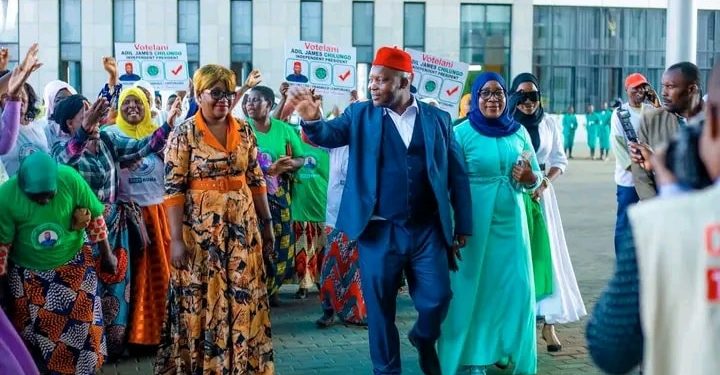What have motivated me to discuss this topic is that, I have noticed that many, many Brothers and Sisters are rather heedless or ignorant of the ruling concerning wearing tight or even fitted lower garments in prayer. I find it disturbing to see one praying dressed in such trousers, jeans etc., and it is even more disturbing when they reveal ones `awrah by either being too tight or by them “slipping down” during rukoo` and sujood…
1. Praying in Tight Clothes so That They Press Over The Private Parts (‘awrah)
Praying in tight fitting clothes is deemed makrooh (disliked) according to the Sharee’ah. It also harms the body and hence it is not good from the point of view of health as well. Perhaps the one praying in such clothes actually leaves parts of his prayer out.
It is known that many people who dress in such a way do not attain their prayer at all while others attain only a little, like the prayer of a hypocrite.
Those who pray, many amongst them nowadays dress in clothes that drape around one or both of their private parts
Ibn Hajar says, that a group of the Hanafee scholars considered such practice as makrooh. [See Fathul-Baaree (1/476)]
If this is the case for normal trousers then what the case when they are very tight?
‘Allaamah al-Albaanee explained that trousers have two problems:
a) This is a dress that resembles the disbelievers. Muslims used to dress in wide bottoms which were loose fitting and baggy like some still do so in Syria and Lebanon. The Muslims adopted this practice of wearing trousers/pants when they were colonized. When the colonizers departed, they left behind this evil influence and changed the Muslims due to the latter’s ignorance.
b) This type of dress constricts and presses upon the ‘awrah. The ‘awrah of a man is from his knee up to his navel. The worshipper should be as far away as he can from disobedience of Allaah during his prayer. He is prostrating (in obedience and submission) to Him. How can he be praying and standing before His Lord, when his buttocks are shown up and what is between is visibly magnified?
It is surprising to find many young Muslims taking exception to ladies wearing tight clothes since they cling to their bodies, yet these young men are forgetting about themselves. There is no difference between a lady wearing tight clothes which press against her body and a man wearing trousers which also cling to his body. The buttock of both a man and a woman is part of the ‘awrah and both of them are the same. So it is compulsory for the youth to be warned about this predicament about which they are blind, except for he whom Allaah has guided, who are few. [Taken from one his tapes]
The Messenger (sallallaahu ‘alaihi wa sallam) forbade a man from praying in his trousers (saaraweel) unless he had a wrapper (rida) on him. [Abu Daawood, al-Haakim and the hadeeth is Hasan]
As long as the trousers are wide and not tight the prayer is valid, but it is better to have a shirt or a top on that covers between the navel and the knee, or lower still unto the middle of his shins or down to just above his ankles, because that is the complete covering.
‘Allaamah Ibn Baaz has a fatwaa where he says that it is permissible to pray in trousers so long as the ‘awrah is not pressed against due to its expansiveness and his backside is not shamelessly visible. If his backside become visible then the prayer is invalidated and if only the clothes press against his ‘awrah then it is makrooh.
2. Praying in Thin and Transparent Clothing
Just like it is makrooh to pray in tight fitting clothes which cling to the ‘awrah and show them up, it is not permissible to pray in thin clothes which is transparent enough to make the (actual) body visible. [Fataawaa Rasheed Ridaa (5/2056)]
Praying in Sleeping Suit or Pajamas:
Abu Hurayrah (radhiAllaahu ‘anhu) reports that a man stood up to the Prophet (pbuh) and asked him about praying in a single garment. So he (pbuh) said, “Unless you find two garments.” Then he asked ‘Umar (r a) who said, “When Allaah is generous, be generous yourselves. A man prayed in a lower
garment (izaar) and an upper garment (ridaa), a waist wrapper (izaar) and a shirt (qamees), in a lower wrap (izaar) and an outer garment with full length sleeves (qaba`), in trousers (saraaweel) and an upper wrap (ridaa), in trousers and a shirt (qamees), in trousers and upper garment (qaba`), in tubbaan and qaba`, and in tubbaan and qamees. [Bukhaaree, Maalik in al-Muwatta, Muslim, Abu Daawood, an-Nisaa`ee, Ibn Maajah, al-Humaydee, Ahmad in al-Musnad, at-Tayaalisee, at-Tahaawee, al-Baghawee, Abu Nu’aym, al-Khateeb]
Abu Hurayrah (ra) reports that a man stood up to the Prophet (pbuh) and asked him about praying in a single garment. So he (pbuh) said, “Unless you find two garments.” Then he asked ‘Umar (ra) who said, “When Allaah is generous, be generous yourselves. A man prayed in a lower garment (izaar) and an upper garment (ridaa), a waist wrapper (izaar) and a shirt (qamees), in a lower wrap (izaar) and an outer garment with full length sleeves (qaba`), in trousers (saraaweel) and an upper wrap (ridaa), in trousers and a shirt (qamees), in trousers and upper garment (qaba`), in tubbaan and qaba`, and in tubbaan and qamees. [Bukhaaree, Maalik in al-Muwatta, Muslim, Abu Daawood, an-Nisaa`ee, Ibn Maajah, al-Humaydee, Ahmad in al-Musnad, at-Tayaalisee, at-Tahaawee, al-Baghawee, Abu Nu’aym, al-Khateeb]
‘Abdullaah ibn ‘Umar (ra) saw Naafi’ praying by himself in a single garment (thawb). So he said to him, “Can you not wear two garments?” He said, “Of course”. He said, “Do you go out to the market in a single garment?” He said, “No”. He said, “Allaah has more right that He is dressed up for!” [at-Tahaawee in “Sharh Ma’aniyyul-Aathaar”,
“Tafseerul-Qurtubee” and “al-Mughnee”]
Such is the case for one who prays in his night garments. He would feel shy to go to market in it on account of its thinness and transparency. Ibn ‘Abdul-Barr said in “at-Tamheed” : The people of knowledge love for one to be enveloped in his garments; that he beautifies himself for his prayer as much as he is able with regards to his clothes, applies perfume and cleanses his teeth (miswaak).
On the topic of conditions for the correctness of the prayer, the jurists (fuqahaa) talk about the condition of covering the ‘awrah: They make the condition for the covering to be thick and say it is not permissible to make it fine so that the skin tone is visible. [“al-Majmoo'”, “al-Mughnee”, etc]
This is a requirement whether for a man or a woman, whether praying alone or in congregation. So whoever’s clothes reveal his ‘awrah in spite of his ability to keep it covered, then his prayer is invalidated. Yaa banee aadama khudhoo zeenatakum ‘inda kulli masjidin [Sooratul-A’raf Aayah 31]
According to “ad-Deenul-Khaalis” 2/101 and “at-Tamheed” 6/379 the aim of zeenah is the thawb and the command means to conceal the ‘awrah for every prayer.
Praying in a Light Tunic:
Some people pray in garments that only lightly cover their bodies and its transparency allows one to see the person’s skin colour, while not wearing anything underneath. (It is not enough to wear shorts or trunks underneath unless it covers the extent between the belly-button and the knee.) The statement of ‘Umar previously shows usage of more than one garment to screen oneself and how one garment is added to another. The evidence shows that it is compulsory (waajib) to be properly covered and praying in only one garment is allowed only because of the person’s straightened circumstances. The prayer of someone in two garments is better than doing so in one. This has been clearly elaborated by Qaadee ‘Iyaadh who has dispelled the differences regarding this matter. [See Fathul-Baaree, al-Majmoo’ (1/476)
and Naylul-Awtaar (2/78, 84)]
Imaam Shaafi’ee said if a person prays in his shirt and it reveals him, then his prayer is invalidated. [See al-Umm (1/78)]
Even Worse For Ladies:
The lady doing that is in a more terrible situation than the man. And if she prays in a loose outer garment with sleeves and slit in front then it is better for her to wear her jilbaab on top. She must make sure she does not pray wearing delicate material such as nylon or chiffon. Consider the hadeeth where we are told how in the last part of the nation of Muhammad (pbuh) there will be ladies who are dressed yet they are naked.
Ibn ‘Abdul-Barr says such women will dress in light material which will cover them yet not screen them, so they will be dressed in name but naked in reality. [“Tanweerul-Hawaalik” 3/103]
A report from Hisham Ibn ‘Urwah shows once Mundhir ibn Zubayr sent a beautiful garment from Kohistan to Asmaa Bint Abee Bakr who having felt the material and disapprovingly asked for it to be sent back to the sender. When asked as to why since it did not show the body, she replied it was transparent. [Ibn Sa’d in “at-Tabaqaatul-Kubraa” (8/184) : saheeh]
As-Safaareenee said it is forbidden to wear clothes that is light and fine so that the ‘awrah is not covered whether for a male or a female. This is a matter of the Sharee’ah without any difference. [“ad-Deenul-Khaalis” (6/180)]
Ash-Shawkaanee said in “Naylul-Awtaar” (2/115) that it is compulsory (waajib) for a lady to cover her body with a garment which is not transparent. This is a condition for covering the ‘awrah.
And Allah know best.




















